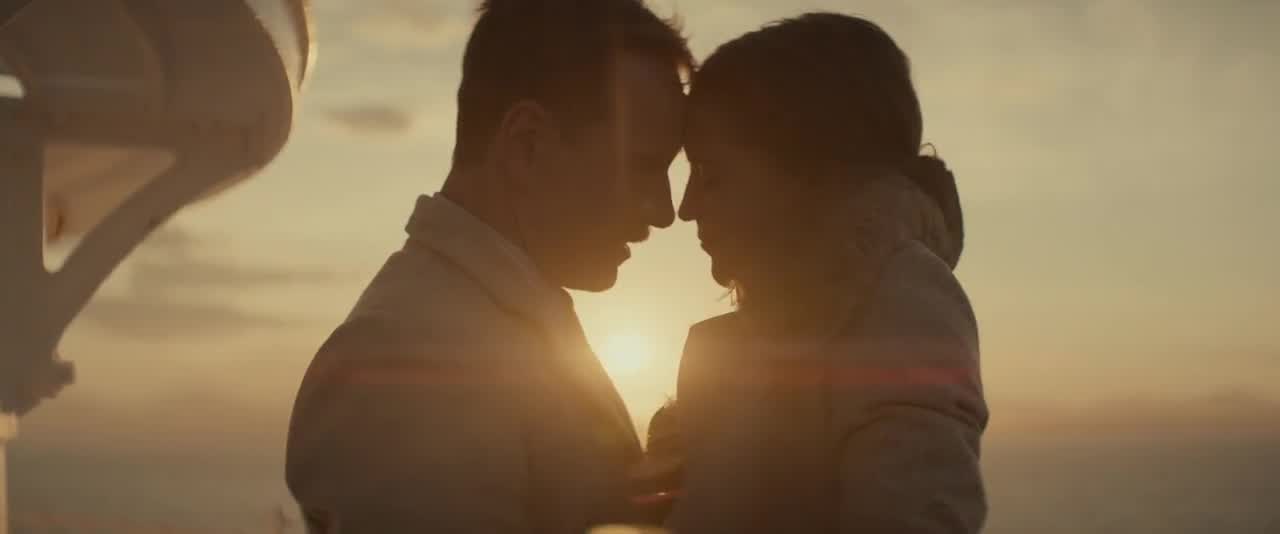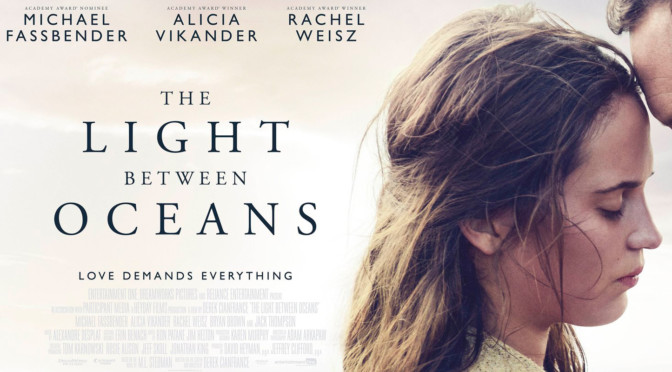Despite its similar naming structure, The Light Between Oceans, shares few similarities to its predecessor The Place Beyond the Pines. Set in Australia shortly after WWI, the film stars Michael Fassbender (Shame) as Tom Sherbourne, a veteran hired as a lightkeeper for a remote island. Soon, he meets and falls in love with Isabel (Alicia Vikander; Ex Machina). After their marriage, they have two miscarriages within three years leaving Isabel despondent until a rowboat washes ashore. Inside they find a dead man and the baby girl that will forever change their lives. Tom attempts to report the incident, but buckles under Isabel’s desire to have a child.
Once the little girl, Lucy, enters the picture, Tom and Isabel’s lives are filled with joy. They play with their new daughter and show her off to their family and friends. The hapiness lasts until her christening where Tom spots a tearful woman, Hannah (Rachel Weisz; The Deep Blue Sea), praying in front of a grave for her husband and infant daughter who were lost at sea the same day he found Lucy. Racked with guilt and unable to persuade Isabel to confess their sins, Tom leaves a note for Hannah letting her know her baby is safe, but her husband is dead. What soon follows is a messy situation. Lucy taken from the parents she knows to the rightful mother she wants nothing to do with as Tom and Isabel face repercussions of their actions.
In its early parts, The Light Between Oceans resembles a Nicholas Sparks movie. The leads only require one picnic before Isabel brings up the idea of marriage so they can spend the next 10 minutes handwriting cliche-ridden professions of love a la Dear John. “I never knew I could talk about the way I feel”, writes Tom. Cianfrance’s films are known for their raw intensity of character interactions. He’s been called an “actor’s director” because he is able to create an original intimacy even in predictable situations, like the relationship in Blue Valentine. This makes the overly simplistic beginning to the central romance especially disappointing. Fassbender and Vikander are a real life couple, but their early scenes of courtship (or rather the single scene) feel forced. It’s like the director looked at the actors and said “Be perfect for each other” and started rolling. Isabel’s optimism doesn’t match with Tom’s taciturn demeanor and it’s unclear why either has developed affection. Fortunately, the romance becomes more believable as the two grow closer during the hardships they face.

The Sparks comparison extends to the setting and cinematography. The film is set by the ocean with an overabundance of landscape shots. Granted, the visuals are breathtaking. Ocean waves crashing against the shore and lonely sunsets dominate the first half of the movie. While aesthetically stunning, the focus on the backdrops unnecessarily slows down the film’s pace and has the unintended effect of distancing the viewer from the central conflict. The fading light of the sun seems to carry equal importance to Tom and Isabel’s relationship early on, but Cianfrance lacks the ability to imbue meaning into the natural imagery. He is not Terrence Malick.
In the final act the film, Cianfrance finally delivers on the emotional resonance he is known for. Actions have consequences, and the depth of Tom and Isabel’s relationship is shown, not told, as they take steps to protect each other. Here, the professions of love are earned. In some ways, The Light Between Oceans is Cianfrance’s version of a Merchant Ivory film. Romantic, but deliberately old-fashioned with his natural inclinations muted until the end. Still, not many filmmakers working today can match Cianfrance’s ability to draw out an emotional response. The feelings come like waves hitting the rocks of the island, overwhelming and powerful. While the The Light Between Oceans starts out slow, the scenery is enough to carry the film to its piercing final third.

4/5 stars.
